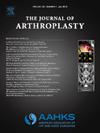Outpatient Versus Inpatient Total Hip and Knee Arthroplasty in Morbidly Obese Patients
IF 3.4
2区 医学
Q1 ORTHOPEDICS
引用次数: 0
Abstract
Background
Morbidly obese patients undergoing total joint arthroplasty (TJA) face increased postoperative complications, yet studies assessing the safety of this surgery in the outpatient setting for this population are lacking. This study aimed to fill this gap by assessing the safety and benefits of outpatient TJA in morbidly obese patients.
Methods
This study is a retrospective review of a commercial claims database. Based on the setting of the procedure, the patients were divided into four groups as follows: inpatient-TKA (total knee arthroplasty), outpatient-TKA, inpatient-THA (total hip arthroplasty), and outpatient-THA. The two TKA groups were matched based on age, sex, and the Charlson Comorbidity Index. The THA groups were matched similarly. The 30- and 90-day medical and surgical complications were compared between these groups. There were 5,500 patients included in each of the outpatient and inpatient TKA groups and 1,550 in each of the outpatient and inpatient THA groups.
Results
Patients undergoing inpatient TKA had higher rates of pulmonary embolism, urinary tract infection, transfusions, intensive care unit admissions, emergency department visits, readmissions at 30 days, surgical site infections, periprosthetic joint infection, prosthetic dislocations, and costs. As for the inpatient THA group, they had higher rates of pulmonary embolism, urinary tract infection, transfusions, intensive care unit admissions, emergency department visits, and costs.
Conclusions
It is well-established that morbidly obese patients undergoing TJA have higher complication rates than normal-weight patients, and patients should be counseled before arthroplasty. This study highlights the safety and benefits of outpatient TJA in morbidly obese patients. However, one should note that this was done using an insurance database, in which results may differ if it was done in a public and lower socioeconomic setting. Therefore, future prospective studies are needed to confirm the findings before implementing outpatient TJA in morbidly obese patients.
门诊与住院患者的全髋关节和膝关节置换术在肥胖症患者中的应用
背景:接受全关节置换术(TJA)的病态肥胖患者面临着更多的术后并发症,但目前还缺乏针对这一人群的门诊手术安全性评估研究。本研究旨在通过评估门诊TJA手术对病态肥胖患者的安全性和益处来填补这一空白:本研究是对商业索赔数据库的回顾性审查。根据手术环境将患者分为四组:住院患者-TKA(全膝关节置换术)、门诊患者-TKA、住院患者-THA(全髋关节置换术)和门诊患者-THA。两个 TKA 组根据年龄、性别和夏尔森合并症指数 (CCI) 进行匹配。THA组的匹配情况类似。对两组患者 30 天和 90 天的医疗和手术并发症进行了比较。结果:住院 TKA 患者的肺栓塞、UTI(尿路感染)、输血、ICU(重症监护室)入院率、ED(急诊科)就诊率、30 天再入院率、手术部位感染、假体周围关节感染、假体脱位和费用均较高。至于 THA 住院组,他们的肺栓塞、UTI、输血、ICU 入院率、急诊室就诊率和费用均较高:病态肥胖患者接受全关节置换术的并发症发生率高于正常体重患者,这一点已得到公认,因此患者在接受置换术前应接受咨询。这项研究强调了病态肥胖患者接受门诊 TJA 的安全性和益处。不过,需要注意的是,这项研究是通过保险数据库完成的,如果在社会经济水平较低的公共场所进行,结果可能会有所不同。因此,在对病态肥胖患者实施门诊 TJA 之前,需要进行前瞻性研究以确认研究结果。
本文章由计算机程序翻译,如有差异,请以英文原文为准。
求助全文
约1分钟内获得全文
求助全文
来源期刊

Journal of Arthroplasty
医学-整形外科
CiteScore
7.00
自引率
20.00%
发文量
734
审稿时长
48 days
期刊介绍:
The Journal of Arthroplasty brings together the clinical and scientific foundations for joint replacement. This peer-reviewed journal publishes original research and manuscripts of the highest quality from all areas relating to joint replacement or the treatment of its complications, including those dealing with clinical series and experience, prosthetic design, biomechanics, biomaterials, metallurgy, biologic response to arthroplasty materials in vivo and in vitro.
 求助内容:
求助内容: 应助结果提醒方式:
应助结果提醒方式:


